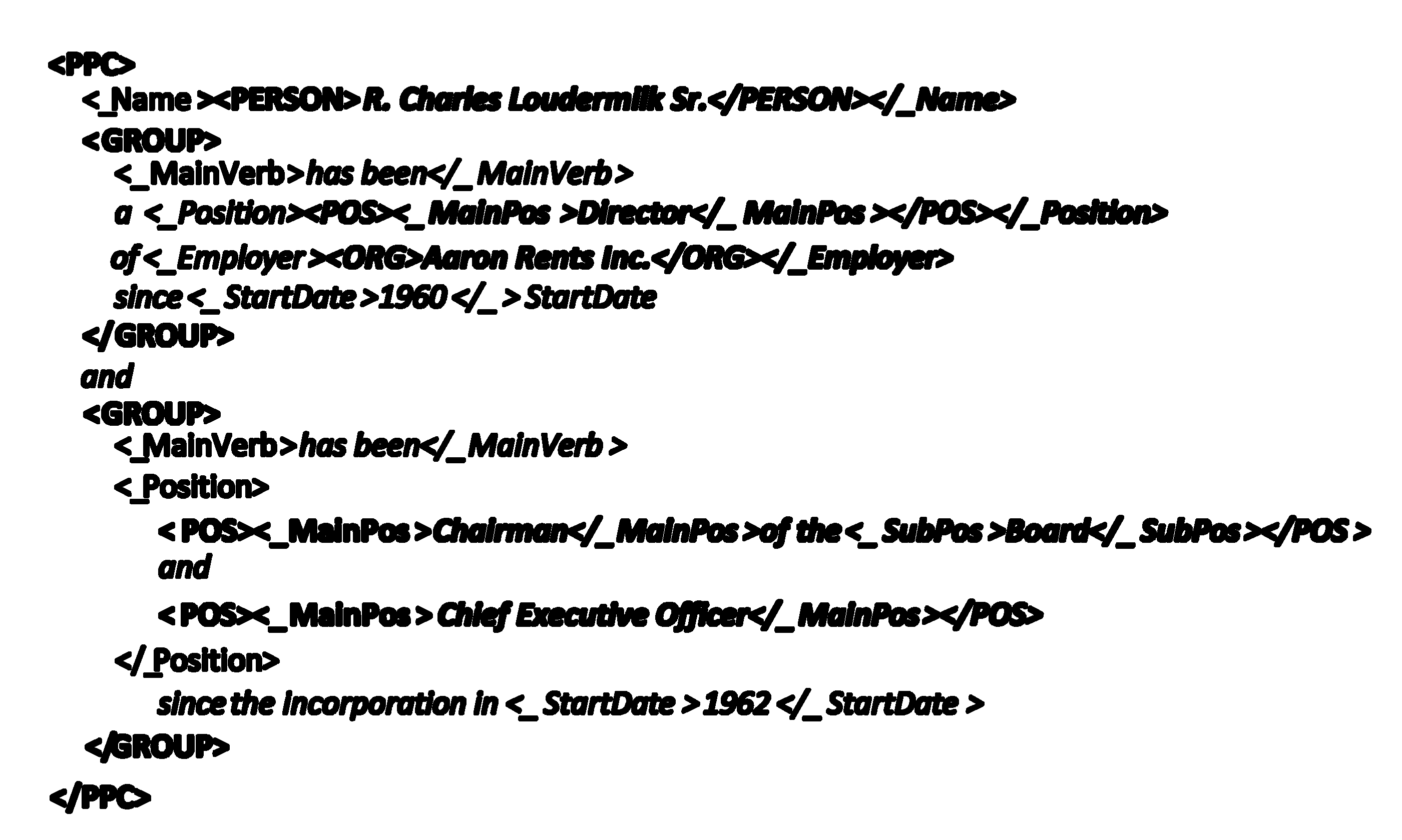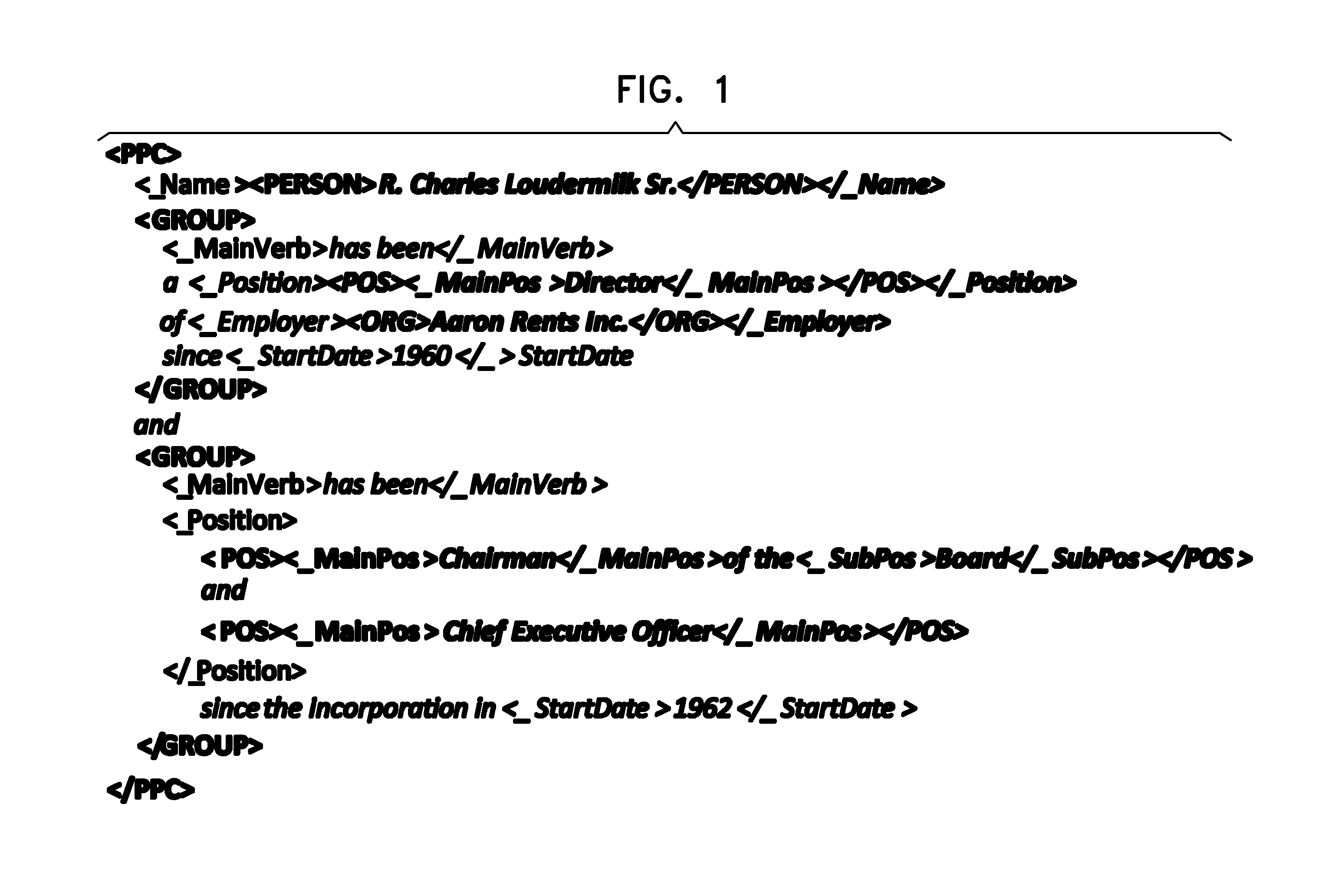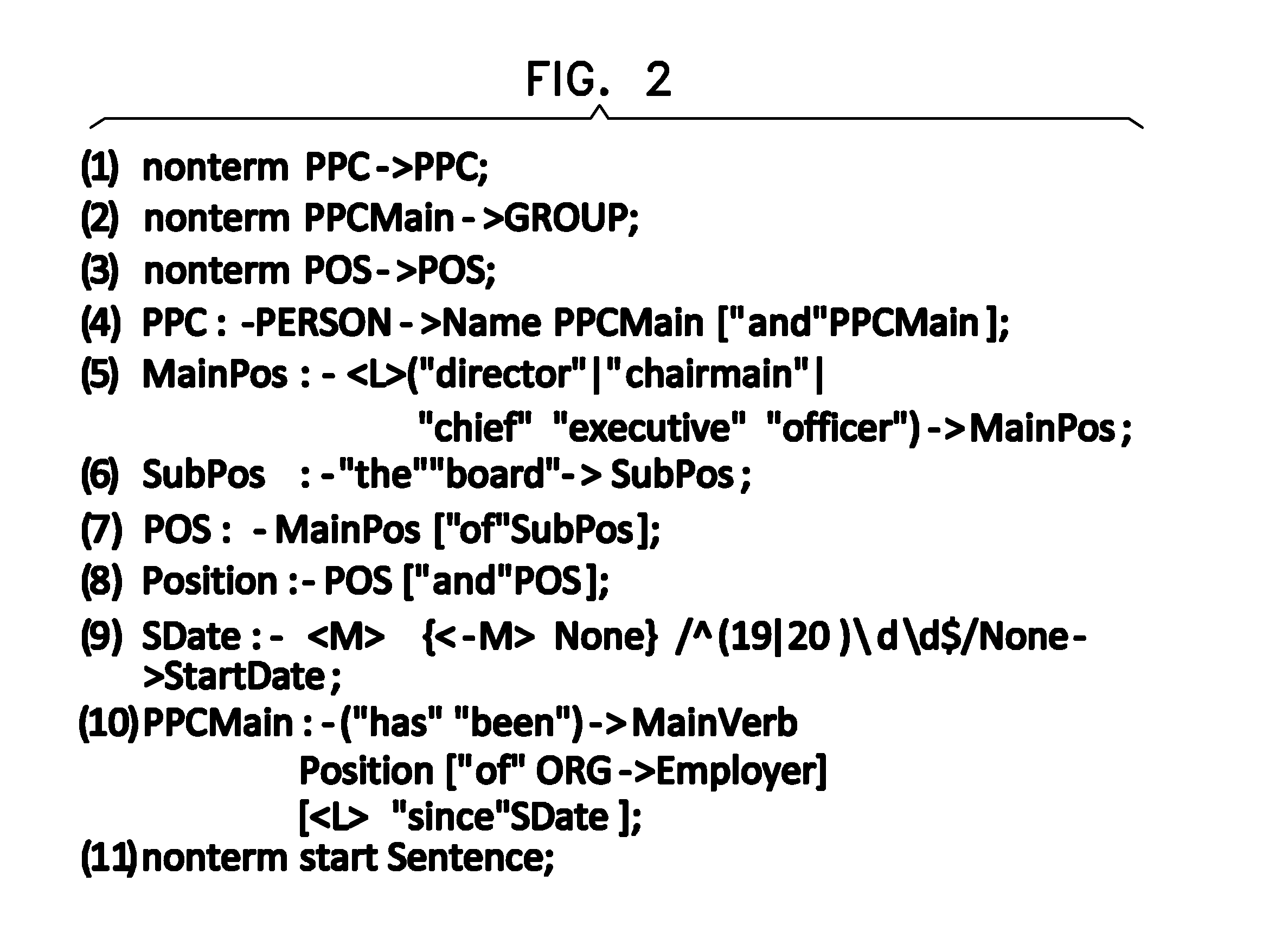Conditional random fields (CRF)-based relation extraction system
a random field and relation extraction technology, applied in the field of automatic extraction of complex relations, can solve the problems of poor performance of automatic content extraction (ace) relation extraction shared tasks, poor performance of trainable machine learning-based sequence classifiers, and inability to perform relation extraction tasks proficiently
- Summary
- Abstract
- Description
- Claims
- Application Information
AI Technical Summary
Problems solved by technology
Method used
Image
Examples
example set
of Rules
[0101]Reference is now made to FIG. 2, which shows an example of a CARE grammar which is used by the relation extraction system. A very simplified set of rules is shown for generating the labeled output shown in FIG. 1. This set of rules is used to demonstrate the essence of CARE rule writing, although obviously the actual rules employed are far more flexible than those shown in this example. The following points should be noted:[0102]1. Only target relation nonterminals and the starting nonterminal need to be declared.[0103]2. The rule weights are here defined using , , and marks, which stand for Large, Medium, and Small magnitudes respectively. The weights may be negative. The letters L, M and S are actually macros, standing for 10, 1, and 0.1, respectively.[0104]3. The MainPos weight is set to “large” (line 5), since the appearance of the specified words strongly forces the interpretation of them as positions. However, there is no such constraint in the SubPos rule (line...
PUM
 Login to View More
Login to View More Abstract
Description
Claims
Application Information
 Login to View More
Login to View More - R&D
- Intellectual Property
- Life Sciences
- Materials
- Tech Scout
- Unparalleled Data Quality
- Higher Quality Content
- 60% Fewer Hallucinations
Browse by: Latest US Patents, China's latest patents, Technical Efficacy Thesaurus, Application Domain, Technology Topic, Popular Technical Reports.
© 2025 PatSnap. All rights reserved.Legal|Privacy policy|Modern Slavery Act Transparency Statement|Sitemap|About US| Contact US: help@patsnap.com



